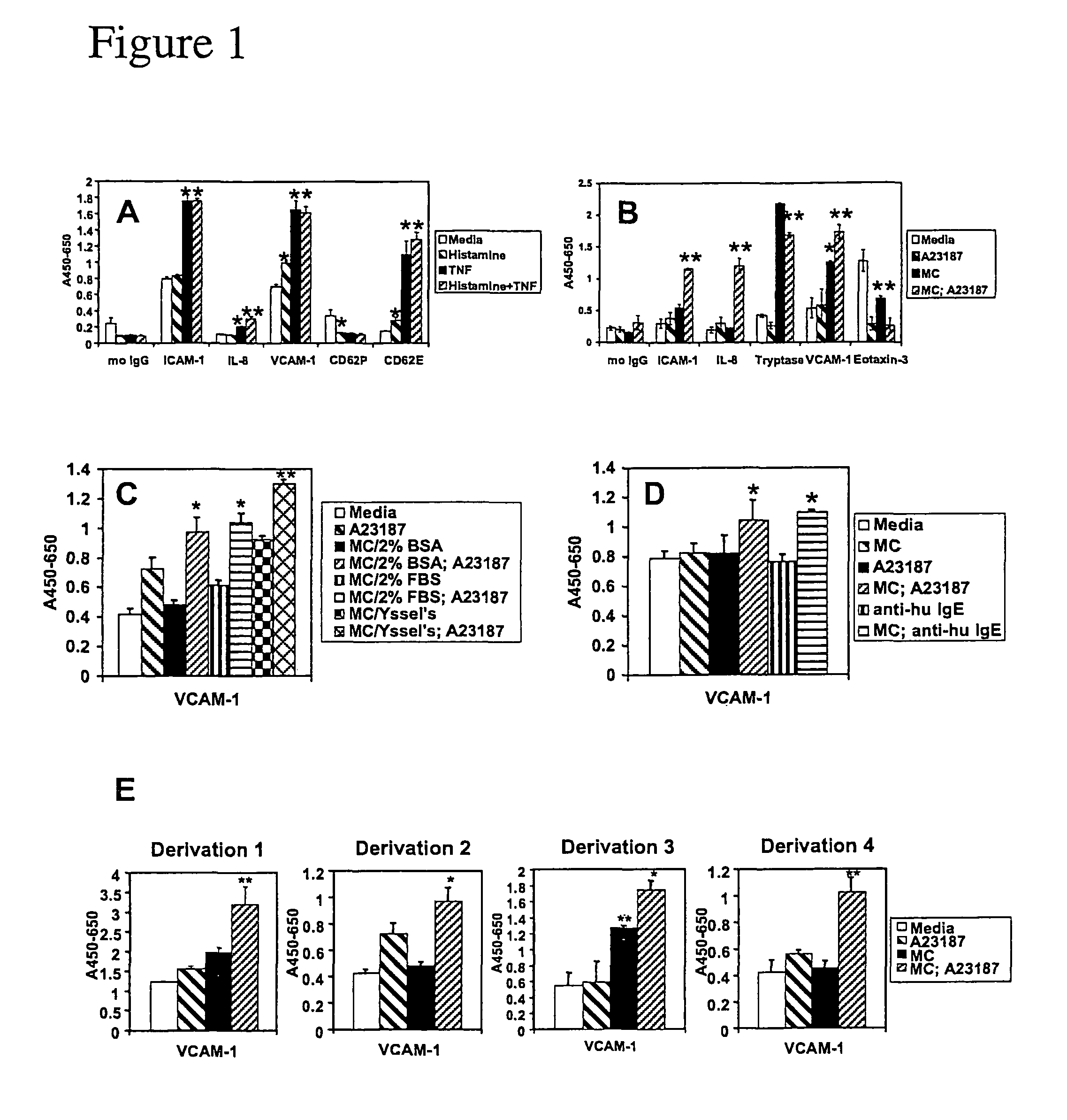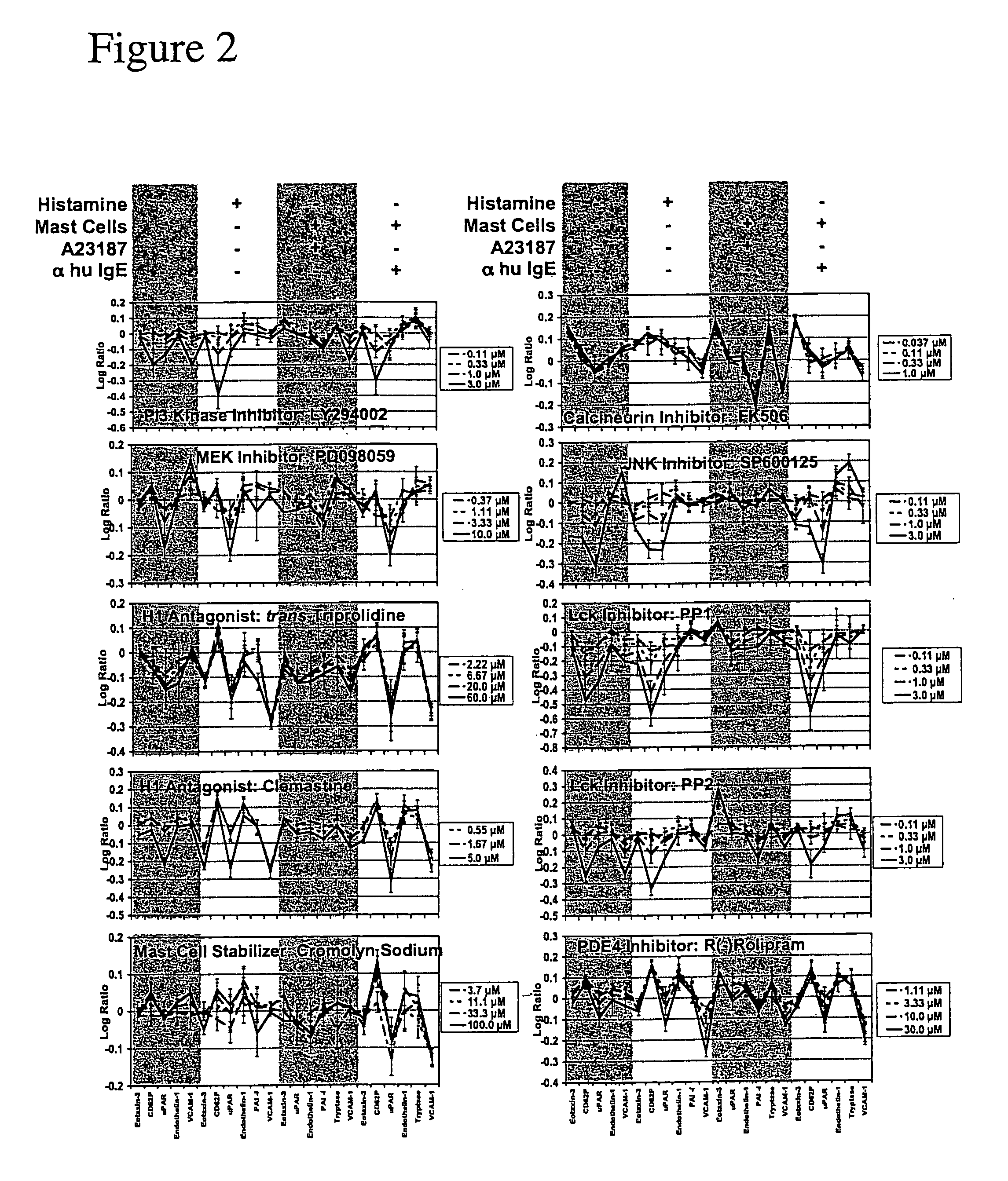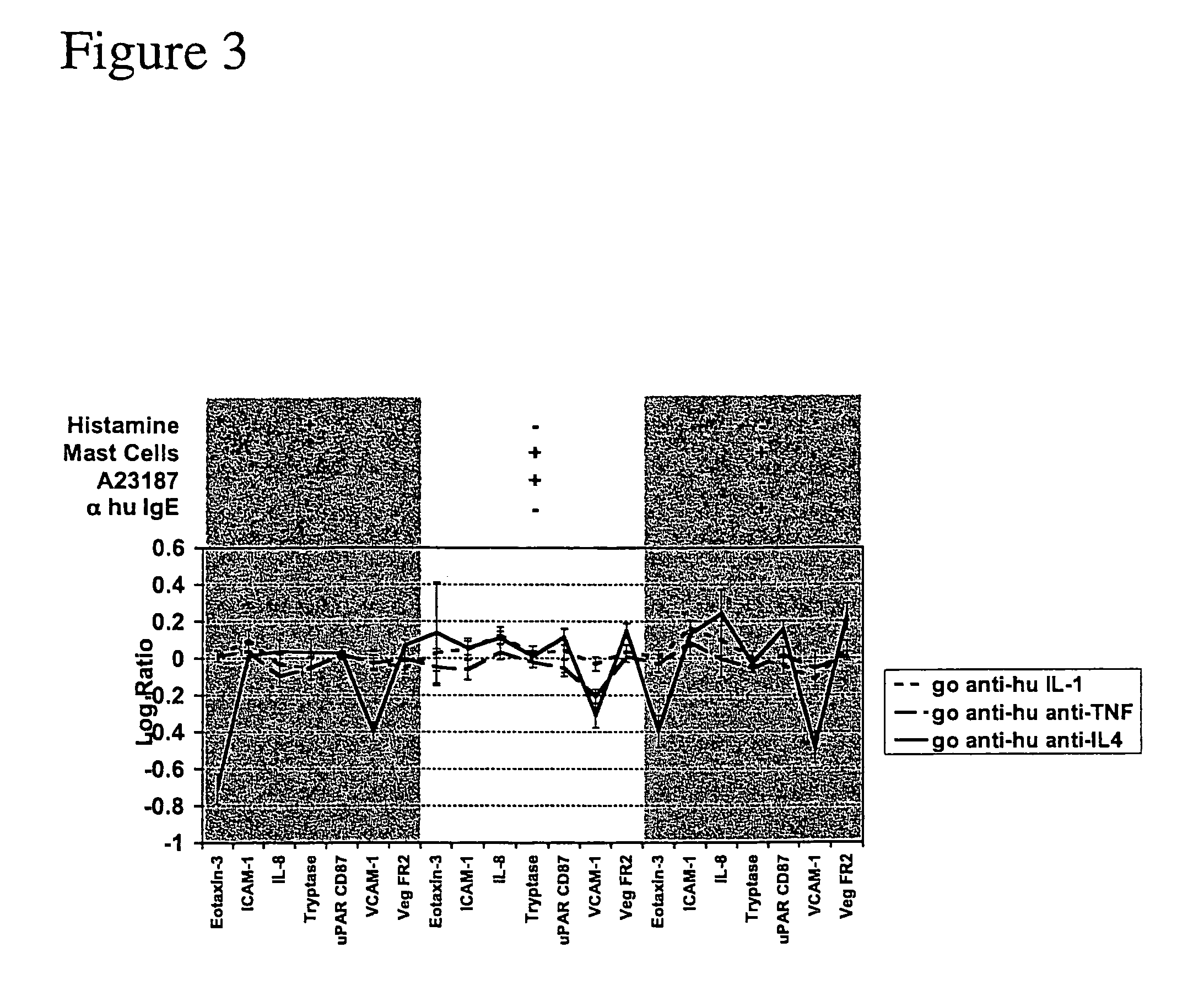Biological dataset profiling of asthma and atopy
a biometric and dataset technology, applied in the field of biometric dataset profiling of asthma and atopy, can solve the problems of low ability to control asthma, death from asphyxia, and high susceptibility of man to anaphylaxis
- Summary
- Abstract
- Description
- Claims
- Application Information
AI Technical Summary
Benefits of technology
Problems solved by technology
Method used
Image
Examples
example 1
Regulators of Endothelial Cell Responses to Allergic Inflammation (HUVEC—IL4 / HIS)
[0052]The present invention is applied for the screening of compounds for use in treating allergic inflammatory responses such as allergy, asthma, atopic dermatitis and chronic inflammatory diseases disposed towards a Th2 phenotype or modulation of Th2 type immune responses.
[0053]Primary human umbilical vein endothelial cells (HUVEC) are used. Other cells that may replace HUVEC in the screen include primary microvascular endothelial cells, aortic or arteriolar endothelial cells. 2-10×104 cells / ml are cultured to confluence in EGM-2 (Clonetics). Other media that may replace EGM-2 include EGM (Clonetics) and Ham's F12K medium supplemented with 0.1 mg / ml heparin and 0.03-0.05 mg / ml endothelial cell growth supplement (ECGS) and 10% FBS, or medium M199 (Life Technologies, Inc.) containing 20% fetal bovine serum and 2 ng / ml basic fibroblast growth factor (Jaffe, J. Clin. Invest. 52:2745, 1973; Hoshi, PNAS 81:...
example 2
Regulators of T Cell Function—Th2 Responses HUVEC / Th2-Sag / IL2
[0055]The present invention is applied for the screening of compounds that inhibit the activation of Th2 lymphocytes.
[0056]Human peripheral blood CD4+ T cells are employed. Other cells that may be employed include human peripheral blood CD3+ cells. Cells are isolated from human peripheral blood mononuclear cells utilizing Ficoll-hypaque density gradient centrifugation as described (Ponath, JEM 183:2437, 1996). Following adherence of cells to plastic, CD4+ cells are isolated from non-adherent cells using Miltenyi magnetic beads as described (Andrew, J I 166:103, 2001) or isolated by negative selection using MACS beads as described (Kim, JCI 108:1331, 2001). Purified CD4+ lymphocytes are then cultured 6-7 days at 0.5×106 cells / ml in complete RPMI (RPMI-1640+50 μg / 50 U penicillin / streptomycin+10% FCS+50 μM beta-mercaptoethanol+1 mM sodium pyruvate+2 mM L-glutamine) in plates precoated 12 hr with 1-5 μg / ml anti-CD3 (Pharmingen...
example 3
Regulators of Fibroblast Responses HDF-3C / TGF, HDF-TGF, HDF-IL4 / IL13 / TGF
[0061]The present invention is applied for the screening of compounds that inhibit fibroblast responses.
[0062]Human neonatal fibroblasts (HDFn) are used. Cells are cultured at 3×104 cells / ml in DMEM / F12 (50 / 50) from Cellgro, supplemented with LSGS kit (from Cascade Biologics); fetal bovine serum, 2% v / v, hydrocortisone 1 ug / ml, human epidermal growth factor 10 ng / ml, basic fibroblast growth factor 3 ng / ml and heparin 10 μg / ml, and penicillin / streptomycin amphotericin B solution (PSA), until confluency. Medium is replaced with DMEM / F12 with only penicillin / streptomycin amphotericin B solution (PSA), then 24 hours later, the following are applied:
[0063]
FactorsDesignationTNF (5 ng / ml), IL-1 (1 ng / ml), IFN (20 ng / ml) andHDF-3C / TGFTGFβ (20 ng / ml)TGFβ (20 ng / ml)HDF-TGFTGFβ (20 ng / ml), IL-4 (20 ng / ml) andHDF-IL4 / IL13 / TGFIL-13 (20 ng / ml)
[0064]After another 24 hours incubation (37° C., 5% CO2) the cultures are evaluated ...
PUM
| Property | Measurement | Unit |
|---|---|---|
| affinity | aaaaa | aaaaa |
| frequency | aaaaa | aaaaa |
| adhesion | aaaaa | aaaaa |
Abstract
Description
Claims
Application Information
 Login to View More
Login to View More - R&D
- Intellectual Property
- Life Sciences
- Materials
- Tech Scout
- Unparalleled Data Quality
- Higher Quality Content
- 60% Fewer Hallucinations
Browse by: Latest US Patents, China's latest patents, Technical Efficacy Thesaurus, Application Domain, Technology Topic, Popular Technical Reports.
© 2025 PatSnap. All rights reserved.Legal|Privacy policy|Modern Slavery Act Transparency Statement|Sitemap|About US| Contact US: help@patsnap.com



